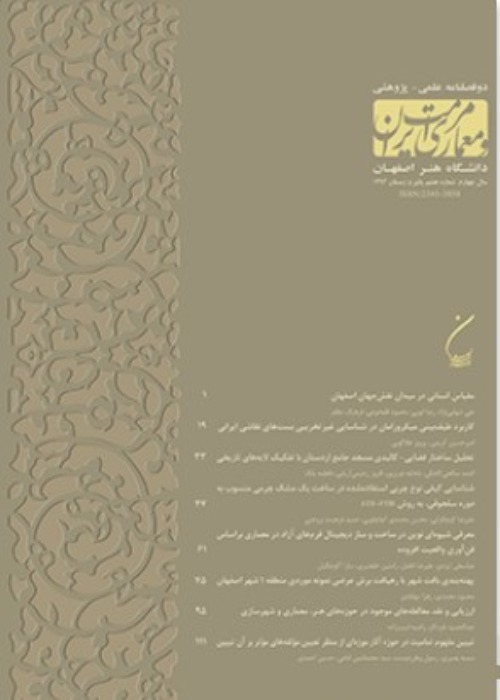The Use of Rapid Prototyping Technology to Reconstruct the Missing Parts of Glass Works with the Approach of Applying in Historical Glasses
Author(s):
Abstract:
Although nowadays the advancements in technologies and preservation methods have led to effective conservation of historical and ancient glass works, it is still necessary to develop much less-destructive methods in conservation practices. Rapid prototyping technique (RPT) in recent years has been increasingly implemented in Engineering, Medical, Industrial Design and Architecture fields. In this study the RPT- including 3D scanning and 3D printing was investigated and implemented in reconstruction of missing parts of glass works. The reconstruction of a glass work with missing parts was considered as the subject for this study. The ordinary methods for reconstraction of missing areas in historical glasses are moulding and casting away from the object gap-filling with resins, but in this new work the subject was scanned with an optical 3D scanner to be able to simulate the object itself and its missing part in a 3D modeling software and then print by a 3D printer. The whole process was performed with minimum need to make physical contact with the subject. Its potential in obtaining a less-destructive reconstruction procedure was investigated and its advantages and limitations in comparison to traditional methods were identified. The results indicated that implementing RPT in reconstruction of the missing parts of glass works can lead to none or less-destructive treatment in working with ancient glass masterpieces. The reconstruction process can be achieved in a very short time and higher accuracy and the printed piece can be an exact match of the main work. Several pieces of the missing part or the whole subject can be printed. Soft copy of the subject would be available for future works and can be used in other research centers. The subject can be reprinted with any desired changes in the original design of glass work. It is also achievable to attach the printed piece to the main piece temporarily with keeping the potential of reversibility in conservation of the object. And also the study was subject to the following limitations such as: mono color printing of the missing piece, using a polymer as a printing material, limited transparency in printing filaments and minor errors in the performance of the 3D scanner itself.
Keywords:
Language:
Persian
Published:
Maremat & memari-e Iran, Volume:6 Issue: 12, 2017
Pages:
85 to 102
magiran.com/p1661256
دانلود و مطالعه متن این مقاله با یکی از روشهای زیر امکان پذیر است:
اشتراک شخصی
با عضویت و پرداخت آنلاین حق اشتراک یکساله به مبلغ 1,390,000ريال میتوانید 70 عنوان مطلب دانلود کنید!
اشتراک سازمانی
به کتابخانه دانشگاه یا محل کار خود پیشنهاد کنید تا اشتراک سازمانی این پایگاه را برای دسترسی نامحدود همه کاربران به متن مطالب تهیه نمایند!
توجه!
- حق عضویت دریافتی صرف حمایت از نشریات عضو و نگهداری، تکمیل و توسعه مگیران میشود.
- پرداخت حق اشتراک و دانلود مقالات اجازه بازنشر آن در سایر رسانههای چاپی و دیجیتال را به کاربر نمیدهد.
In order to view content subscription is required
Personal subscription
Subscribe magiran.com for 70 € euros via PayPal and download 70 articles during a year.
Organization subscription
Please contact us to subscribe your university or library for unlimited access!


